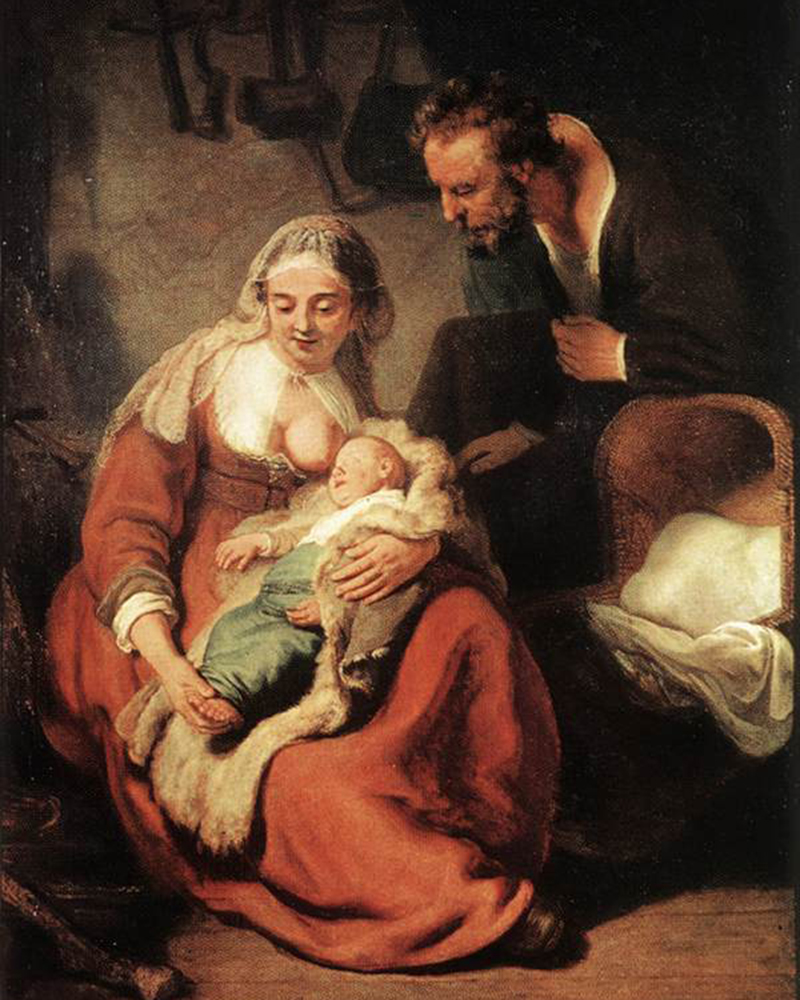An image of the Virgin nursing Jesus has been reproduced many times throughout history in the form of frescoes, manuscripts, panels, canvases, and sculptures.
According to Christian tradition, during their flight to Egypt after the birth of the Child, the Holy Family had to make constant stops to take care of the newborn. Very close to the Basilica of the Nativity is one of those places where Mary fed the baby with her milk. A few drops spilled and the place went down in history as the Milk Grotto.
This image of the Virgin nursing Jesus has been reproduced many times throughout history in the form of frescoes, manuscripts, panels, canvases, and sculptures.
The first representations
The oldest depictions of Our Lady of the Milk are preserved in the Roman catacombs of Priscilla. In one of them, Mary, Jesus, and the prophet Balaam appear, pointing their fingers at a star. This gesture could refer to the biblical text of Numbers 24:15-17, which reads, “The oracle of Balaam son of Beor (…) a star shall come out of Jacob, and a scepter shall rise out of Israel…” In the same catacombs, there are other frescoes with the same scene.
Galaktotrophousa
In the splendor of Byzantium, Eastern Christians popularized the image of the Galaktotrophousa. This name comes from the Greek stem “galakt-“, which means milk, and “trophein,” which means to nourish or nurture.
This tradition of representing Our Lady of the Milk in the form of an icon has continued to this day in many Orthodox images.
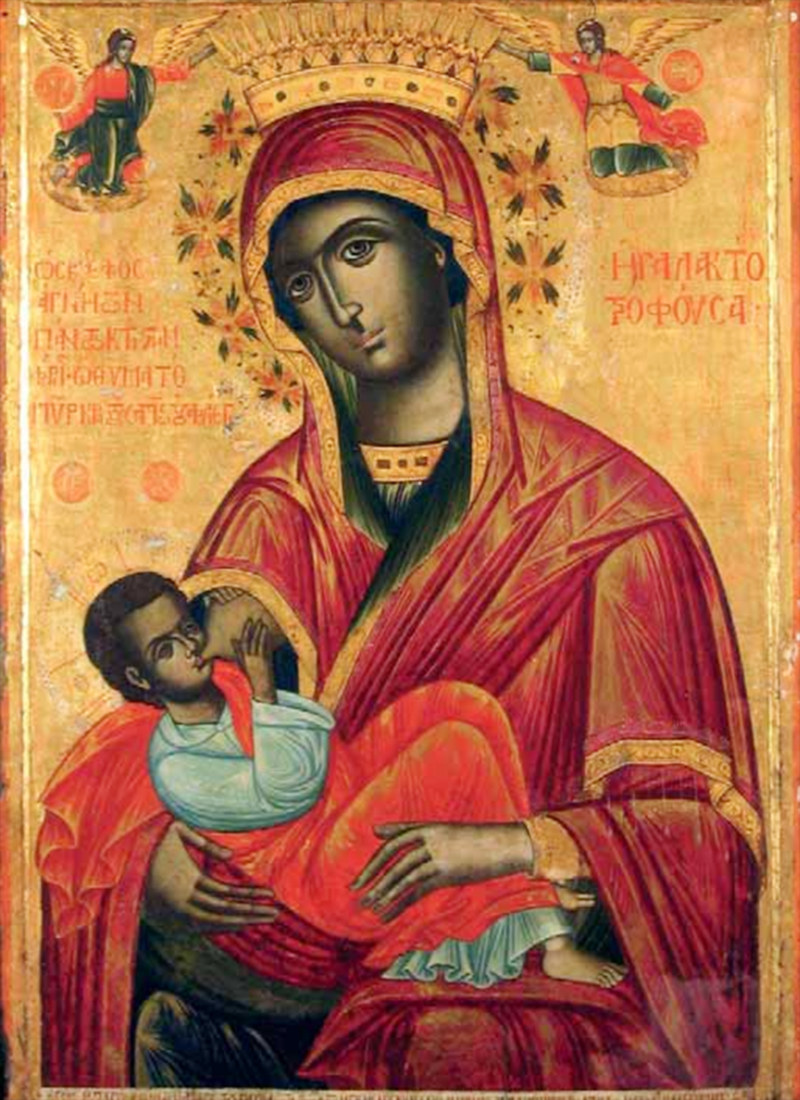
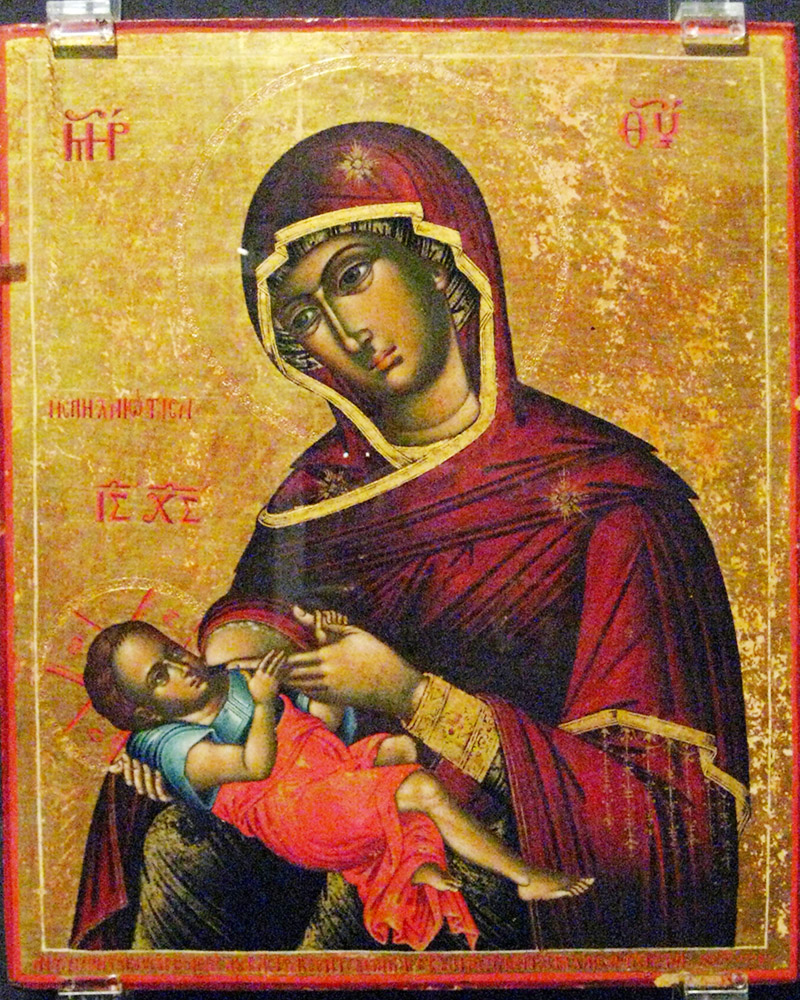
Our Lady of the Milk
The Middle Ages saw the heyday of veneration of the Virgin Mary. Countless churches were erected throughout Europe in her honor. Her representation as the mother of Jesus breastfeeding the Child appeared in those centuries in many places, from small formats in books of the Liturgy of the Hours to large panels reserved for altars or chapels.
In the Amesbury Psalter of the mid-13th century, kept at Oxford, there’s a beautiful miniature in blue tones of Our Lady of the Milk.
In the Gothic style we find various examples, such as the beautiful Gothic panel by Ambrogio Lorenzetti (1285-1348) kept in the Pinacoteca Nazionale in Siena. Barnaba da Modena (1328-1386), Jacobello del Fiore (1370 – 1439) and Lorenzo Saragossa (1363-1406) also painted several panels recreating Our Lady of the Milk.
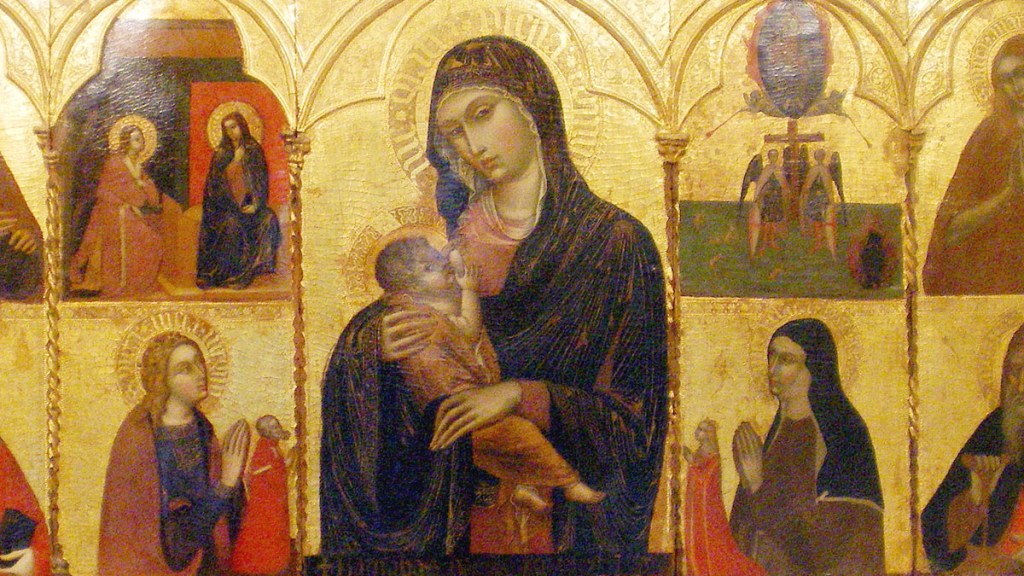
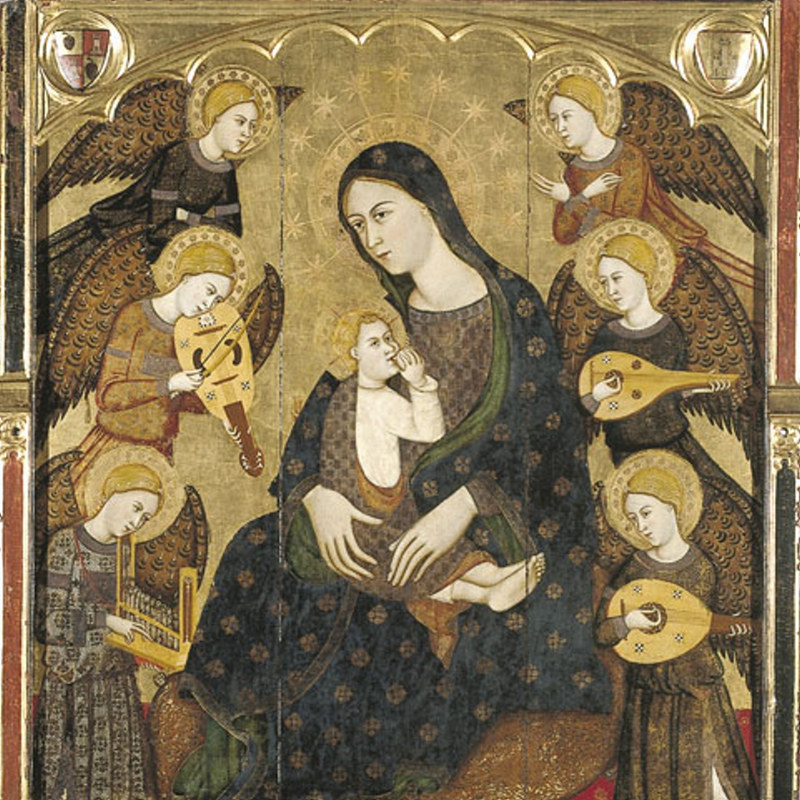
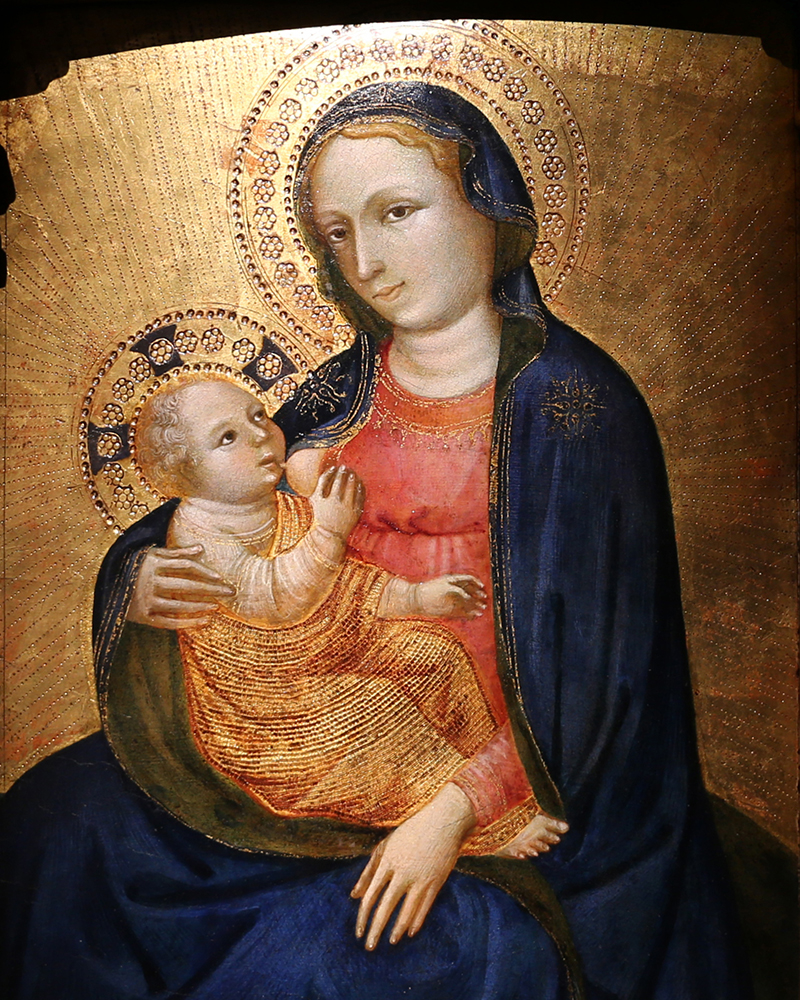
The Belgian painter Hans Memling (1433-1494) also made various depictions of Our Lady of the Milk throughout his career.
Renaissance images of Our Lady
The great geniuses of the Renaissance did not neglect to provide their own image of Our Lady of the Milk, also known by the Latin title of Virgo Lactans.
Leonardo da Vinci (1452-1519) painted several representations of the subject. He created one in 1510, which is preserved in the National Gallery in London, and another which is the best known, “Madonna Litta,” which is in the Hermitage Museum in St. Petersburg. This Madonna was named after the Litta family, a noble family from Milan to whom the work belonged for centuries until it was acquired in the 19th century by Tsar Alexander II.
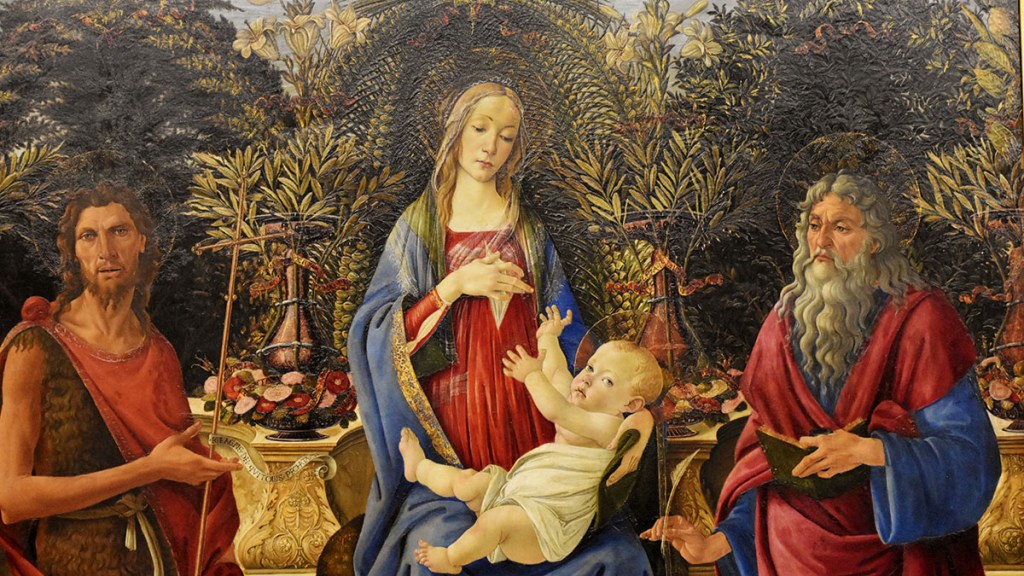
Known as the “Bardi Altarpiece,” this beautiful panel by Sandro Botticelli (1444-1510) shows Our Lady of the Milk flanked on either side by John the Baptist and John the Evangelist. The altarpiece was commissioned by Giovanni d’Agnolo de Bardi, a Florentine banker, for his family chapel in the church of the Holy Spirit in that city on the Arno river.
It was in the last stage of his long career that Titian (1477-1576) painted a sober image of the “Virgin suckling the Infant Christ” in a simple, intimate scene.
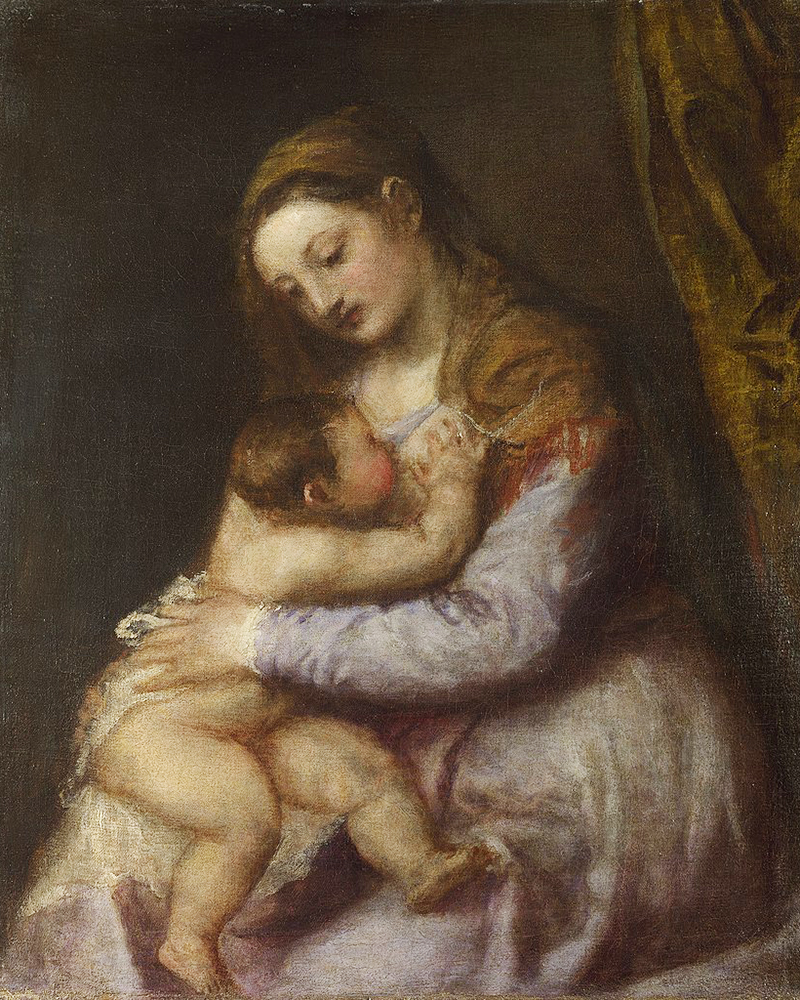
Among the Flemish painters of the Renaissance period, Joos van Cleve (1485 -1541), who made several paintings of the Virgin, stands out along with other artists of his circle. Roger van der Weyden (1400-1464) also painted five different representations of Our Lady of the Milk.
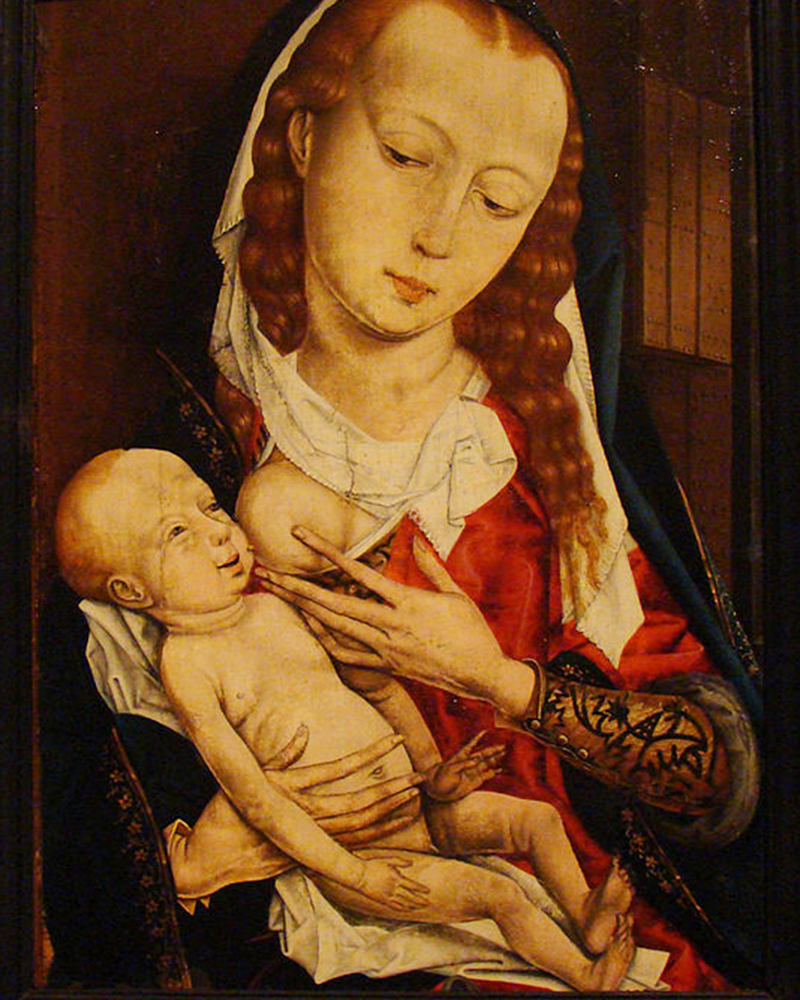
Albrecht Dürer (1471-1528), the most famous German artist of the Renaissance, used this subject matter to produce some of his most beautiful works. One is in the Kunsthistorisches in Vienna and another in the National Gallery in London.
In a typically mannerist style, El Greco (1541-1614) produced his famous “Holy Family with Saint Anne,” kept in the Hospital de Tavera in Toledo. In it, not only Mary and the Child appear; both are embraced by the warm presence of St. Joseph and St. Anne.
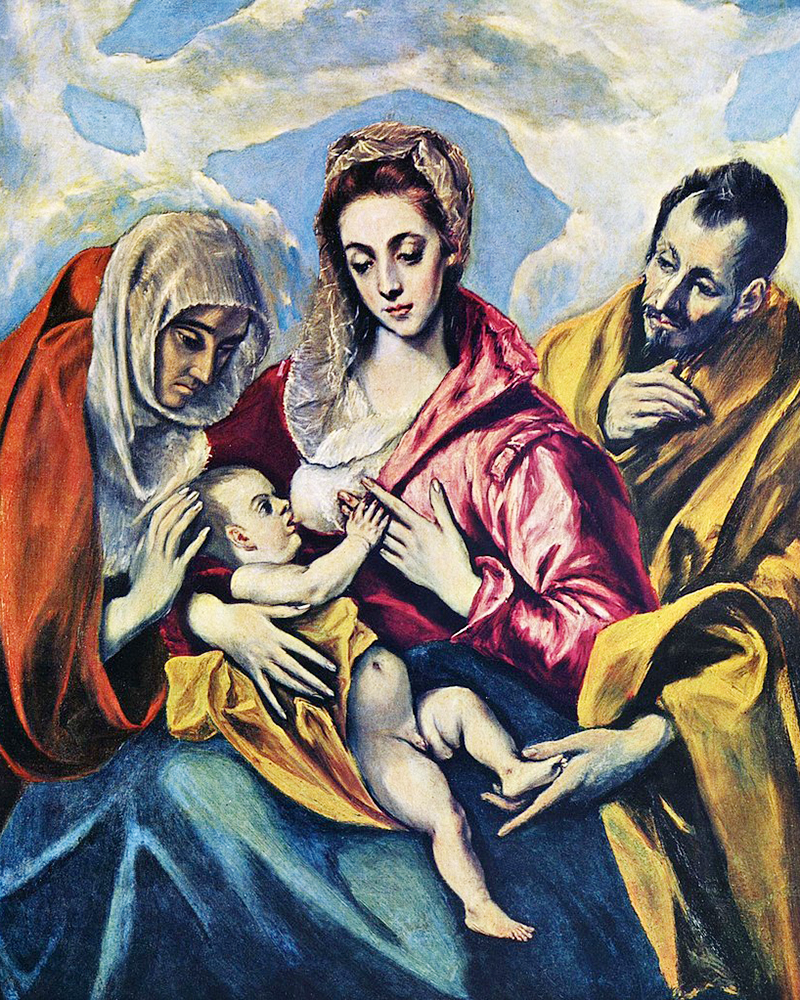
Images of the Blessed Virgin in chiaroscuro
In the Baroque period, an ample religious artistic production took place to support the Catholic Counter-Reformation: Biblical scenes, characters from salvation history, and of course, depictions of Our Lady of the Milk.
One of the few women who made a name for herself in Baroque art, Artemisia Gentileschi (1593-1656), found an important source of inspiration in the history of Christianity. On at least two occasions she depicted the Virgin Mary as a powerful mother embracing her child while feeding him. On one of these occasions, it’s likely that Artemisia was reflecting her own love for her mother, who disappeared when the artist was a child.
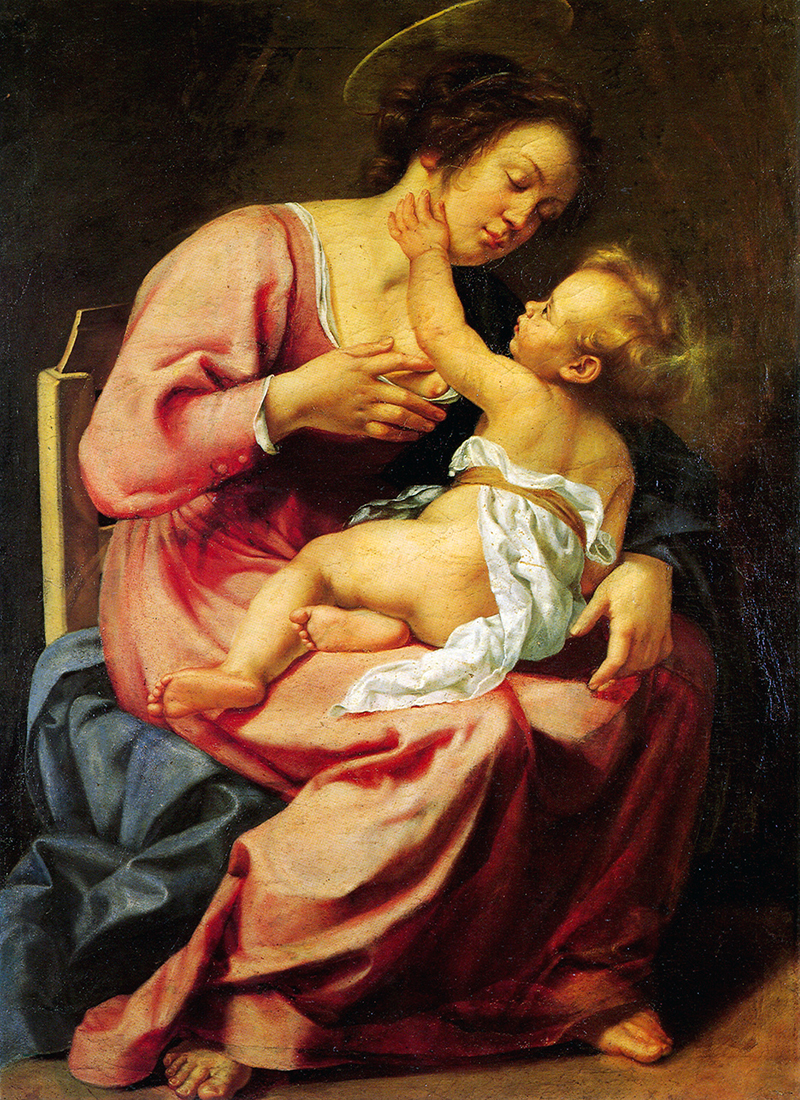
Another woman, the Spanish sculptor Luisa Roldán (1652-1706), also knew how to capture the strength of maternal love in various works, all impeccably modeled.
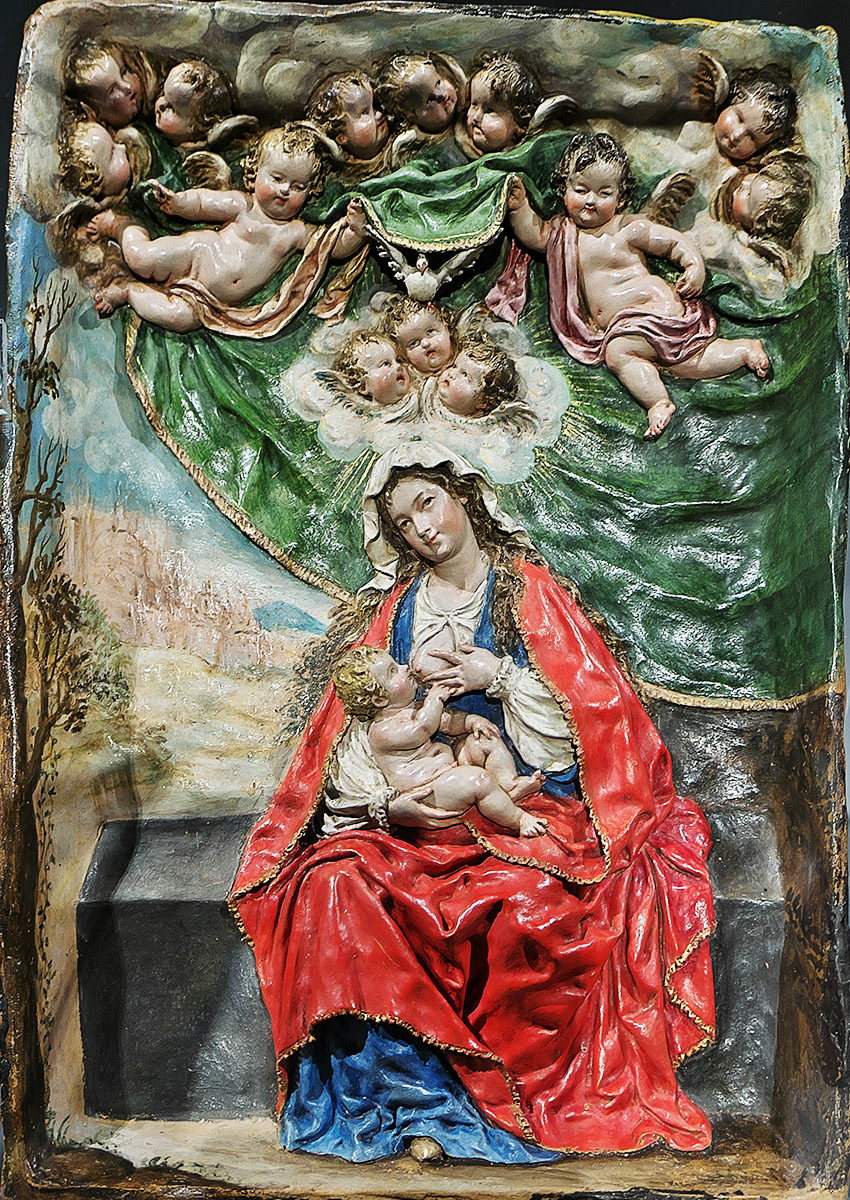
“Resting on the Flight into Egypt” is the title chosen by Francisco de Zurbarán (1598-1664) for a canvas in which the entire Holy Family is represented. In an intimate scene, St. Joseph tenderly observes how his wife breastfeeds the Child. This was not the only time he depicted Our Lady of the Milk; there’s another image kept in Moscow that shows all the talent of the Spanish genius.
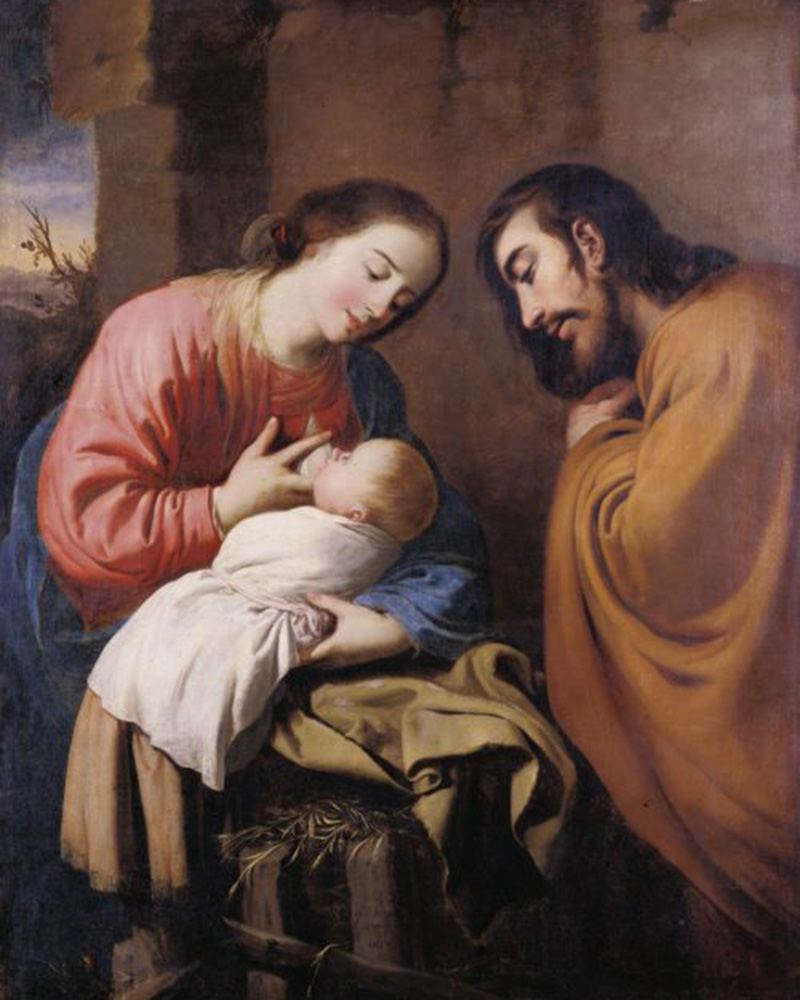
Pedro Pablo Rubens (1577-1640) made a Maria Lactans following his own style of depicting robust women. Dated to the beginning of the 17th century, the light strongly illuminates the little body of the Child and the breast with which Mary feeds him.
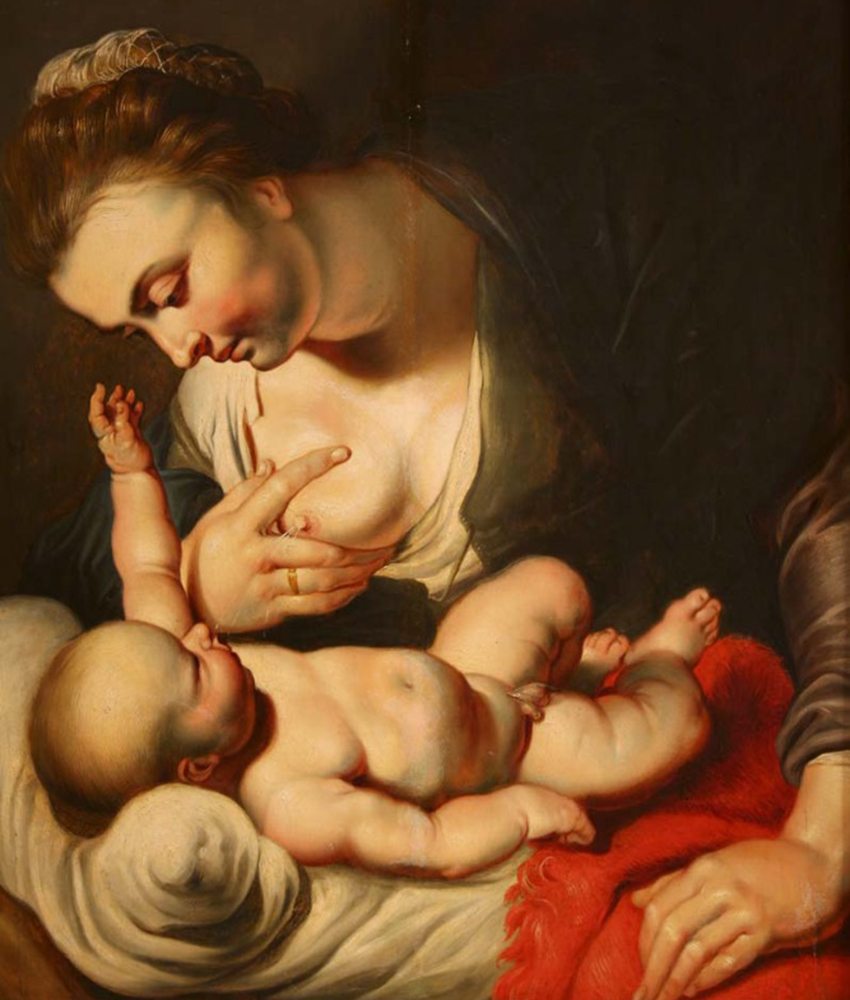
In a scene that looks like the interior of a baroque house, Rembrandt van Rijn (1606 – 1669) put the trappings of a family of his own time on the sacred scene. It’s an image that he repeated on several canvases.
